The Best Bay Leaf Substitute (5 Options for When You’re Out)
Here are the best bay leaf substitute options and how to substitute for dried, fresh, and ground bay leaves.

If your recipe calls for a single whole bay leaf and you don’t have one, you may be tempted to just leave it out. How much of a difference could one tiny leaf really make?
While this slightly minty, peppery Mediterranean herb may seem underwhelming, it does an excellent job of enhancing and balancing bold, heavy flavors in savory sauces, soups (like Asian-style borscht), stews, and meat dishes.
Bay leaves can also transform a bland vegetable dish into a flavor bomb. Just take a peek at these braised leeks with white wine! With that said, if you can’t get your hands on a bay leaf, it’s worth using a bay leaf substitute to get as close as possible to the intended flavor of your dish.
What Does Bay Leaf Taste Like?
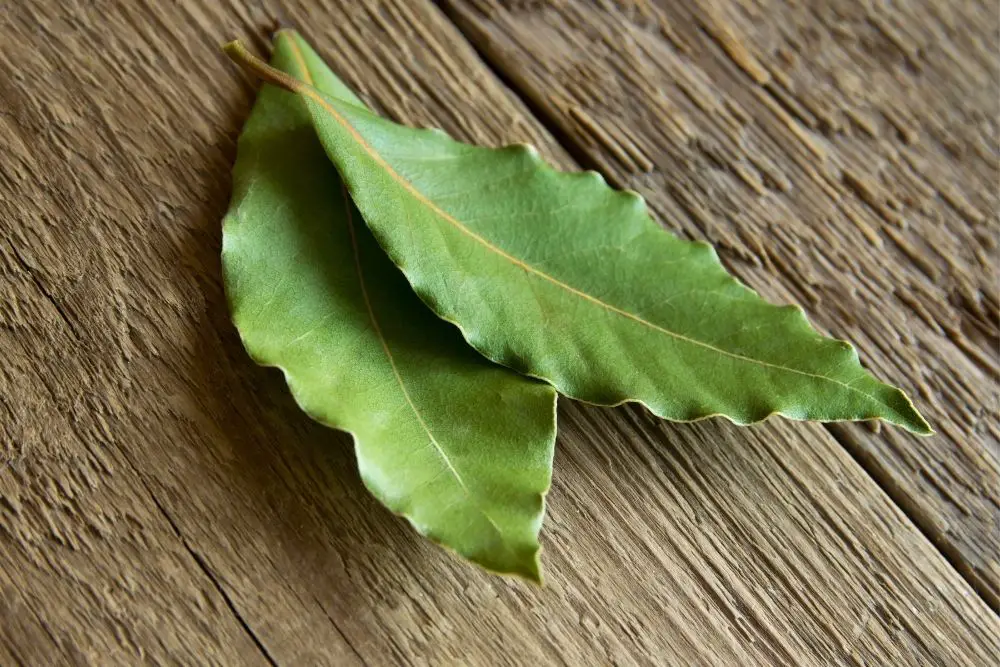
Bay leaves have a strong flavor, but they are a little bitter. They taste peppery and minty, with hints of pine, so that’s what you want to keep in mind when you choose a bay leaf substitute. There are no herbs or spices that replicate the exact flavor of a bay leaf— although some herbs embody a similar menthol, pepper, or “piney” taste and come close.
Due to their pungent nature, bay leaves are used sparingly. One bay leaf is typically more than enough to flavor an entire recipe. Bay leaves are stiff even after being slow-cooked for several hours, so they must be removed and discarded before serving. Not only are they unpleasant to chew and eat whole, but they can also damage your digestive tract (so don’t forget to toss ‘em before dishing up).
Like most herbs, whole bay leaves have a stronger flavor than their crushed, dried counterparts. However, dried, crushed bay leaves will distribute more flavor throughout your whole dish, which can backfire and leave your recipe tasting too minty. Consider this if you substitute ground bay leaves for a whole leaf. You’ll always want to start with a very tiny amount (exact measurements are listed below).
California Bay Leaves Vs. Turkish Bay Leaves

There are two different types of bay leaves: Turkish bay leaves and California bay leaves. If your recipe doesn’t specify which variety to use, it’s probably a fresh or dried Turkish bay leaf you’d be after. Turkish bay leaves grow on the Mediterranean bay laurel tree. They’re also known as laurel leaves.
Turkish bay leaves are sweeter and milder, so they’re the preferred cooking variety. California bay leaves grow on the California bay tree and have a strong eucalyptus and minty flavor. If you find fresh bay leaves in North America, they’re most likely California bay leaves and will have a sharper taste.
If you come across an Indian bay leaf, it’s an entirely different species. An Indian bay leaf tastes like cloves, cinnamon, and allspice, so it won’t work as a bay leaf substitute. But it can certainly work in Caribbean sauces, curries, and homemade aromatic teas.
Can You Substitute Fresh, Dried, and Ground Bay Leaves?

Since fresh, dried, and ground bay leaves have different potencies, you don’t want to substitute them in equal amounts. Here’s how to swap fresh, dried, and ground bay leaves to match their intended taste.
One fresh bay leaf = two dried bay leaves.
One dried bay leaf = ¼ tsp ground bay leaves.
One fresh bay leaf = ½ tsp ground bay leaves.
What’s the Best Bay Leaf Substitute? 5 Options for When You’re Out
1. Dried Thyme

Dried thyme is the best bay leaf substitute. Although bay leaves and thyme look nothing alike, dried thyme is also from the Mediterranean region and has a similar, subtle, minty flavor. Dried thyme works best as a bay leaf substitute in beef and lamb recipes.
How to substitute:
- 1 bay leaf = ¼ teaspoon dried thyme
- ¼ teaspoon crushed bay leaf = ¼ teaspoon dried thyme
2. Basil

Basil is a member of the mint family and can work as a bay leaf substitute. It also has bitter and peppery notes. However, fresh basil is not an exact substitute for a bay leaf because it also has a hint of anise, which is sweet and tastes like licorice. Basil loses the strong anise notes when dried, so it tastes closer to a bay leaf.
Dried basil is a good substitute for bay leaves in Thai, Italian, and other tomato-based dishes, like pasta sauces and stews.
How to substitute:
- 1 bay leaf = 1 basil leaf
- ¼ teaspoon crushed bay leaf = ¼ teaspoon dried basil
3. Oregano
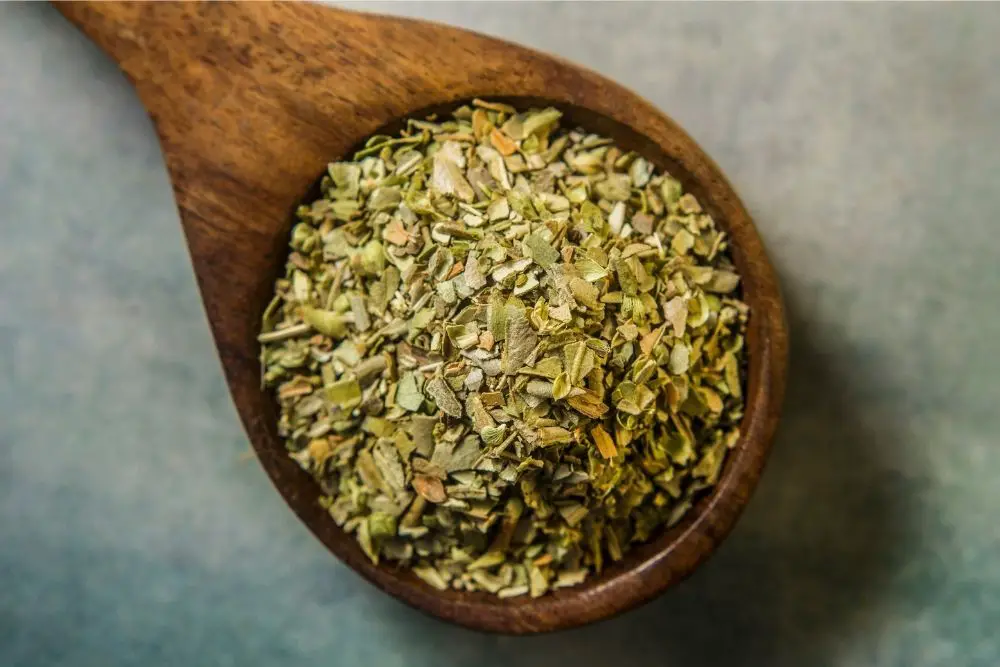
Dried oregano is another bitter, pungent, and slightly minty herb (and one that’s very easy to find) that can also be used as a bay leaf substitute. Like basil, oregano will work best in tomato-based dishes and recipes that use beef and lamb.
How to substitute:
- 1 bay leaf = ¼ teaspoon dried oregano
- ¼ teaspoon crushed bay leaf = ¼ teaspoon dried oregano
4. Juniper Berries
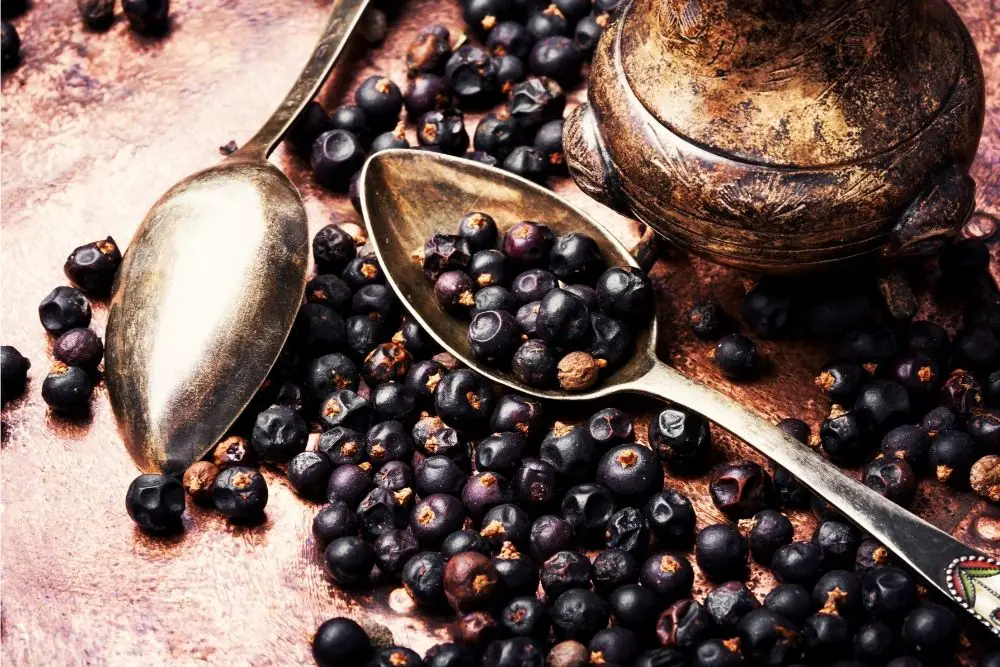
Juniper berries have notes of pine and pepper, which make them an unsuspecting but effective bay leaf substitute. Small but mighty juniper berries also have a strong, overwhelming taste, so they need to be used sparingly. They’re safe to eat, but you can use them whole and discard them before serving (as you would a bay leaf) or grind them before tossing them in to help release their flavor.
How to substitute:
- 1 bay leaf = two or three juniper berries (ground or whole)
5. Boldo Leaves
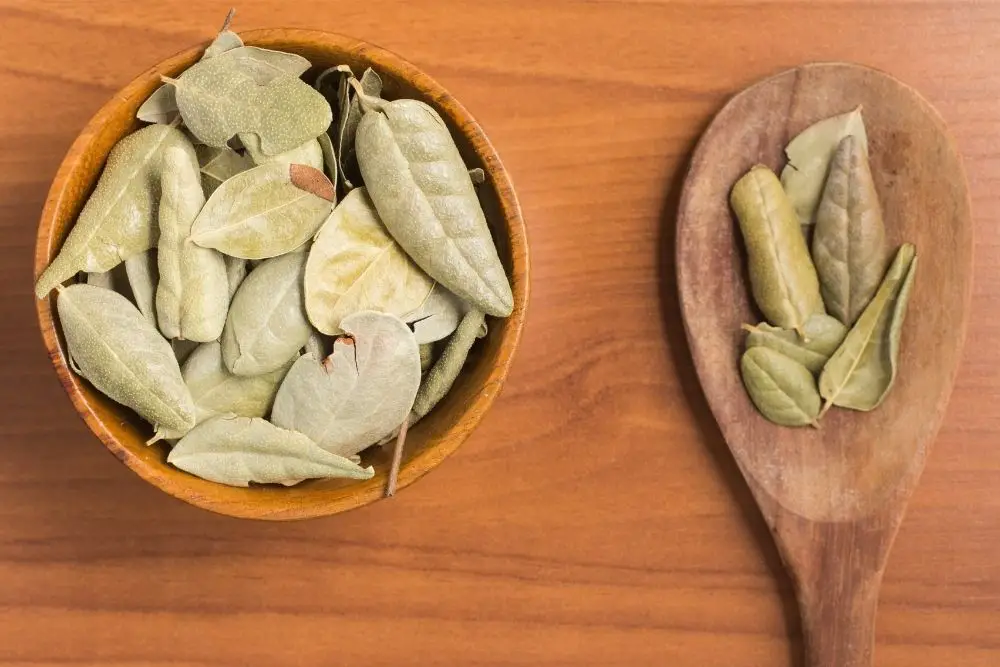
Boldo leaves are native to Chile and grow on the Boldo plant. They’re slightly bitter, rich, and savory but have an all-around softer taste than bay leaves—which allows them to work well in flavoring lighter recipes, such as mushroom and vegetable-based dishes. Boldo leaves can still be overpowering when used in large amounts, so it’s recommended to substitute at even just half the ratio that the recipe calls for and work your way up from there.
How to substitute:
- 1 bay leaf = ½ boldo leaf
- ½ teaspoon crushed bay leaf = ¼ teaspoon crushed boldo leaf
The Takeaway
If you’re out of fresh, dried, or ground bay leaves, thyme is the next best thing to a bay leaf. With a similar potent minty taste and also used liberally in Mediterranean cooking, thyme can replace a bay leaf in meat and pasta dishes without compromising the flavor.
If you don’t have thyme, basil and oregano are next in line and work best as bay leaf substitutes in lamb, beef, and tomato dishes. Juniper berries and boldo leaves can also mimic some of the flavors in a bay leaf but aren’t always easy to find in grocery stores.
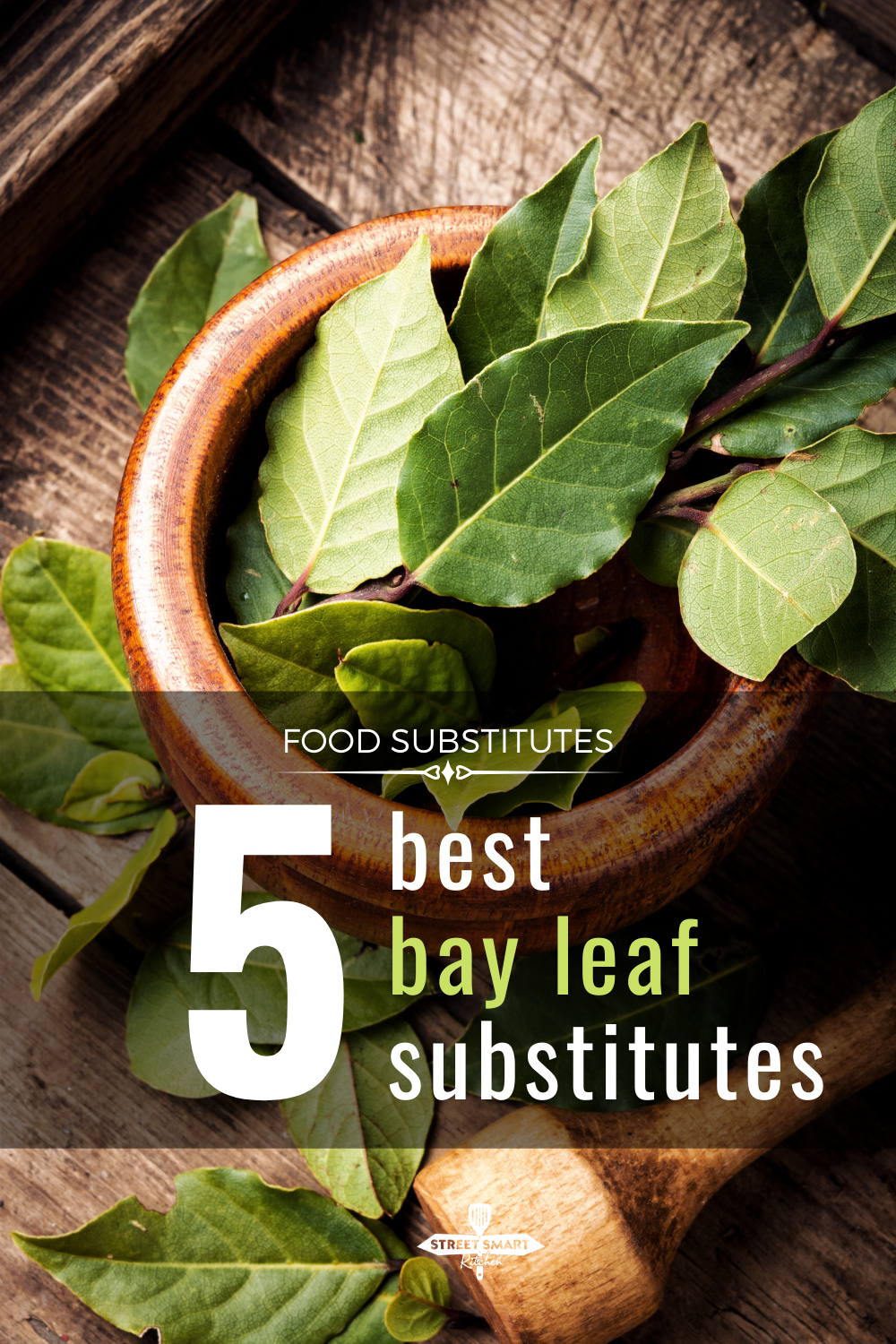
About the Author
Sharon Chen is an Integrative Nutrition Health Coach and author of the Complete Sous Vide Cookbook. She believes food not only brings healing but also connection. As the creator of StreetSmart Kitchen, she aims to make meal prep easier than ever and help you find balance, ease, joy, and simplicity in the kitchen as you improve your well-being.



Pingback: Are Bay Leaves Basil? (+5 Substitutes) - The Whole Portion